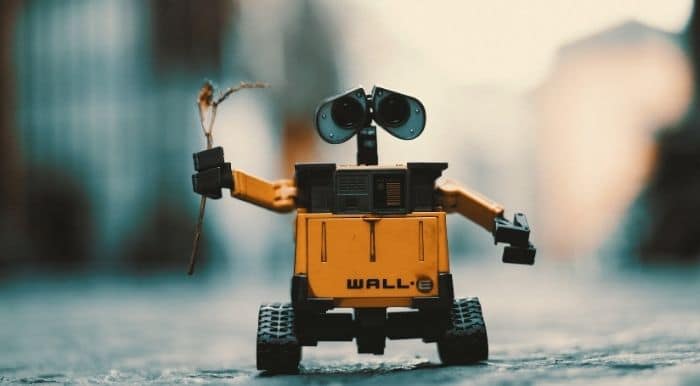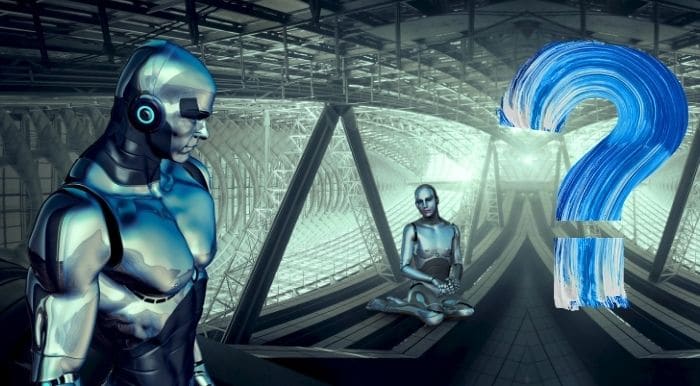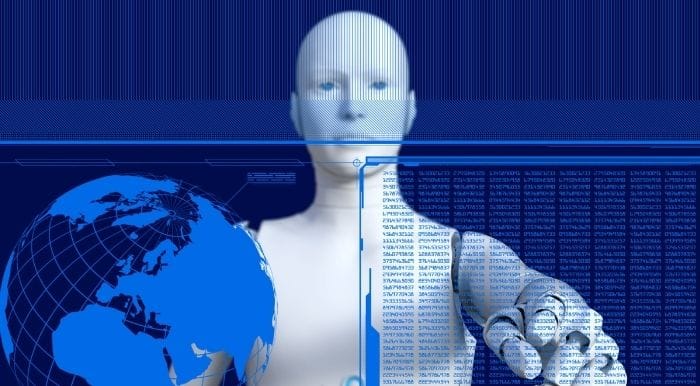What is Artificial intelligence? One example of today’s Artificial intelligence is a smart home, So welcome to my smart home, smart homes are run by Artificial intelligence,
Smart House
Let’s have a look at some of the key features of a smart house, home appliances or voice controlled, sensors adjust lights and air coolers according to the climate, security systems can detect movement outside and warn the residence.
all the appliances are interconnected to each other and can detect vehicles in the driveway and let the owner know home appliances can be controlled remotely through the phone.
History of Artificial intelligence

Now this is just one example in today’s world, let us start with a brief history of Artificial intelligence. Let’s start with john McCarthy.
- 1956
He was the first one to coined the word Artificial intelligence in 1956 had the first Artificial intelligence conference.
- 1969
Let’s jump forward to 1969 was shaky, shaky was the first general purpose mobile robot built. And although by today’s standard, he was very simple.
He did mark a milestone and that we were now processing data differently, He was now able to do things with a purpose versus just a list of instructions,
- 1997
in 1997, the supercomputer Deep Blue was designed which defeated the world chess champion in a game, this is the first time we were actually seeing the computer using logic to beat a human doing some kind of logical, in this case, a game.
So as a huge milestone by IBM to create this large computer that was able to do that in a timely fashion.
2002
Let’s jump up to 2002. And we have our first commercially successful robotic vacuum cleaner nowadays, you can go down to the target and buy one. But back in 2002, that was the first model that was put out.
- 2005 to 2018
Finally 2005 to 2018. Today, in the last more than a decade, we have speech recognition, RPA dancing robots, smart homes, and many more to come.
What I want you to notice about this brief history of Artificial intelligence is the compression of time in 1956. It was just an idea.
And more than 10 years later, we have our shaky, the first one who’s able to flip light switches. And then we go all the way to 97, where we have deep blue.
And there’s a lot of little steps between 69 and 97. But it’s actually able to take on a human in chess and beat them regularly.
Now they did have a lot of ties, so don’t think that it won every game. And then we go only four years later, we have our first commercially successful robotic vacuum cleaner.
And as we go from 2005 to 2018, we go from simple speech recognition to very complicated able to really register with your Google voice and your Siri, we have our RPA we have dancing robots, smart homes, and many more things are just coming out almost monthly in the world of Artificial intelligence.
What is Artificial intelligence?

Artificial intelligence is a form of computer science used to create intelligent machines that can recognize human speech objects can learn, plan and solve problems, like humans.
And I’d like you to focus just on that last one can solve problems like humans. As we saw earlier, we compare the computer that can beat the chess champion, it’s able to the one before that able to turn on and off lights in the house.
So right now, our concept of Artificial intelligence is based primarily on our understanding of how it interacts with humans and how we can compare it to humans.
So speech recognition, that’s a big one today, object detection, solve problems and learn from the given data and plan an approach for future tests to be done, These are all very human things that we do to plan and solve for the future
Types of Artificial intelligence

You want to know the types of AI you can imagine a little robot taking us on a tour,
1. Purely Reactive
let’s look at these a little closer, Here we have our purely reactive he does not have any past memory or data to work with.
He takes actions reacts based on what he sees, okay? It’s not that tough, observes every move and see we have a nice game of chess going on here, And wins takes the best possible decision.
Purely reactive machines specialize in one field of work only, And this case, we see a chess game where they figure out the best moves calculating all the different moves.
Maybe it’s calculating the next one in a row in a linear regression models so you can figure out the best marketing but the very reaction if they don’t have a lot of data, they just have what’s in front of them to look at.
2. Limited memory
Let’s try to understand the limited memory setup, These machines use previous data and keep adding it to their memory. So just me a good restaurant. So maybe we’re looking to go out for dinner tonight and we’re not sure where we want to eat.
Hmm, I see you have been to KFC quite a lot in the past week there is a KFC nearby, So it goes through the previous location data and where they ate prior and says, this is probably a good suggestion for you tonight. Thanks.
It has enough memory or experience to make proper decisions, But the memory is very limited. This isn’t trying to guess what a new location would be or anything like that.
It just takes what it has in front of it and goes okay, this is where you been, this is what you like to give it two thumbs up, one thumb down, whatever. And then it goes from these suggestions. This is where I think you should go.
3. Theory of Mind
this kind of AI has a capacity to understand thoughts and emotions and interact socially and machine based on this type is yet to be built that human looks lonely.
Hey, human, you want to be my friend? Hmm. Okay. Theory of Mind is a thing of the future. Certainly, we see a lot of the industry poking a little bit at this as it tries to guess how you feel about things.
But most of that is still based on previous data, you know, yes, no two thumbs up one thumb down there, your mind would take it one step further and understanding the emotions behind it.
And finally, as we get deep into the sci fi futuristic, we have self aware self aware machines, our future generation of machines, they will be super intelligent, sentient, sentient and conscious.
Like the Terminator, the good guy in the thing or Ultron, or vision from Avengers for right now, these are mostly movie characters or cartoon characters, but we certainly are getting closer to seeing them in the real world.
Hopefully, they’ll be of the type of the good guys and not the bad guys. We see also in the Artificial intelligence sci fi movies,
Applications of Artificial intelligence

Let’s take a look at some of today’s commercial and business uses for the AI.
Banking fraud detection
From a large data consisting of fraudulent and non fraudulent transactions, the AI learns to predict if a new transaction is fraud or not
Online customer support
most of the customer support is now being automated by Artificial intelligence,
Cyber security
using machine learning algorithms and a lot of sample data AI can be used to detect anomalies adapt and respond to threats,
virtual assistants
Siri, Cortana, Alexa and Google Now use voice recognition to follow the user’s commands. These are all wonderful examples of current API’s that are in the commercial and business world. And these ones in particular, have matured over the last half a decade.
For instance, very few large banks in today’s world would not use banking for fraud detection, or for deciding whether it’s a good person to give a loan to or not based on their credit scores and where they’re from and their income.
Same thing with cybersecurity detecting anomalies, or online customer support. Could you imagine in, say HP who has over 70,000 help pages across 17 different languages.
Now they have to figure out how to do online customer support to cover new problems that come up and track them so they can build new pages.
If they had one person doing that, that would take them a year just to do what they need to have posted yesterday. And of course, our virtual assistants.
I don’t know about you, but I love mine, kind of like having a private secretary without having a private secretary.
Future of Artificial intelligence

If we see where it’s at now commercially in business wise, then where is it going? Of course, the imagination is the limit on this one, but you can already see the development in the world today for automated transportation,
they’ll become a common thing maybe even early as 2020 when they have the final release from the leaders in the industry, humans will be able to augment themselves with robots.
Certainly the idea of having the robot Bring me my coffee is lovely or when I’m doing reports or something else on the computer.
It does part of that work for me so that I’m freed up to think about other things. There’ll be more numbers of smart cities is vehicles phones, home appliances will be run by AI home robots will help elderly people with the day to day work.
Japan already has a very in depth program where they begin to integrate robots helping elderly even some of the simple things like getting that box of cereal off the top shelf or monitoring if they fall and need to contact a doctor or an emergency to show up
robots will take over hazardous jobs like bomb defusing, welding, etc.
